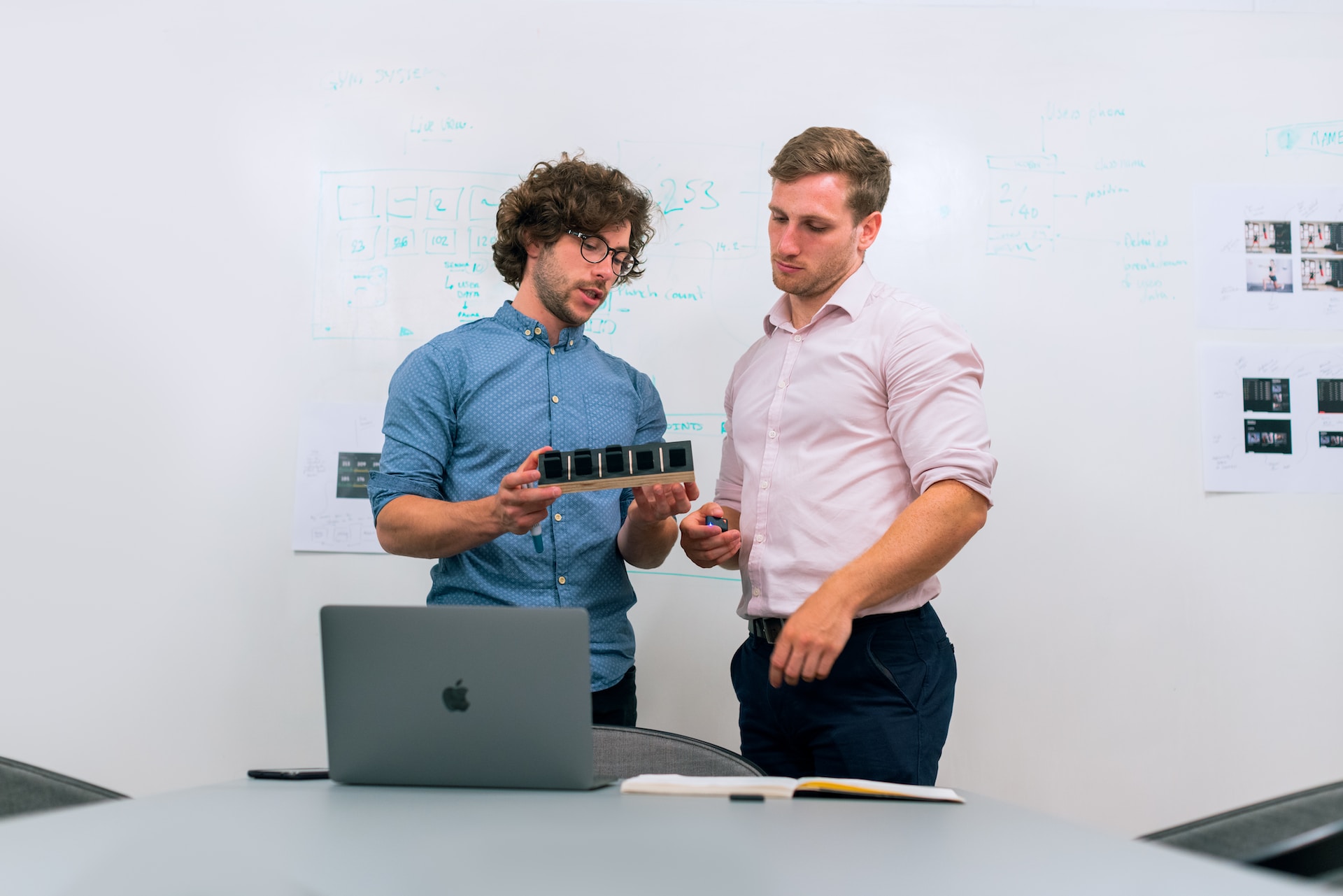Health
9 Pointers for Relieving Computer-Related Eye Strain

Staring at a computer screen for eight hours a day is hard on your eyes. Whether you are haunted by a searing headache that feels like a hot poker is stabbing you in the occipital lobe, a pair of corneas that are so dry and gritty that you wonder if you’ve been bobbing for apples in sand, or eyes so red that your boss keeps sending you for drug testing, computer-related eye strain is a pain in the posterior. Thankfully, you don’t have to resign yourself to a life plagued by eye strain and pupil pain.
By following a few simple steps, you can prevent eye strain and protect your ocular health.
1. Toss the tube.
Archaic tube-style monitors, also known as CRTs, play a major role in annoying your peepers. If possible, kiss your CRT “goodbye” and replace it with a flat-screen LCD monitor. LCD screens have less flicker and glare–leading culprits in the creation of eye strain.
If you have to stick with the tube, make sure you select the highest refresh rate as possible and equip it with an anti-glare screen.
2. Play with the display.
It is likely that one of the first things you did when you got your computer was personalize your display settings. While, your hot pink background and deep purple font may reflect your personality, they are also contributing to your raging headaches and scorching eye sockets.
When selecting your display settings, opt for retina-friendly choices instead of going for dramatic flair. The brightness of your monitor should match that of your surroundings. If your computer acts like a light in the room, it is too bright. Choose a lower color temperature in order to reduce eye strain-causing blue light. Turn up the contrast. Choose a text size that is easy to read. And opt for black text on a white background.
3. Be blinky.
You are not in a staring contest with your computer, so remember to blink. It is said that the average person blinks approximately 20 times each minute, but only 7 times when they are parked in front of their computer. As a result, your eyes dry up and begin to feel like someone has been scrubbing them with steel wool. Remember to blink frequently. You can also rehydrate your eyes with artificial tear eye drops.
4. Protect your 20/20 with 20-20-20.
Break out your egg timer and set it for twenty minutes. A great way to prevent strained eye muscles is to engage in the 20-20-20 rule–every twenty minutes you stare at an object that is roughly 20 feet away for a period of 20 seconds.
5. Roll those eyes.
A great accompaniment for the 20-20-20 exercise is the eye roll. Yes, the action that got you in trouble with parents and teachers will now save you from eye strain. Be bold and roll your eyes up to your eyebrows and then in a large circular motion. Do this once every hour and your eyes will thank you.
6. Get your hands involved.
Under ordinary circumstances, it is a good idea to keep your hands away from your eyes. Unless, of course, you are “palming” them to avoid eye strain. What is palming? It is a great way to give your eyes a break from the pupil-piercing light emitted by your computer screen.
Simply cover your eyes with the palms of your hands–without actually putting any pressure on the eye area. Rest the heel of your hand on your cheek bone and place the fingers of your right hand over those of your left hand across your forehead. Let your eyes soak up the darkness for three minutes and repeat this several times each day.
Eye strain is not the only negative by-product of working life. If you suffer from job-related aches and pains, check out these surprising causes of fatigue.
7. Massage your eyes.
Your eyes work hard. Surely they deserve a massage as much as your neck or your shoulders do. Using the ring finger on each hand, simply make small circular motions, stopping at various points along your orbital bone and brow. This motion is also great for relieving sinus pain.
8. Go gunnar.
No one knows the woes of computer-related eye strain better than dedicated gamers. Gunnar glasses, while designed with the devout gamer in mind, can benefit anyone who spends a great deal of time glued to a computer screen. Their yellow hued lenses combat the blue light emitted by your monitor, greatly reducing eye strain. They also increase clarity and contrast and come in both prescription or non-prescription forms.
9. Seek a pro.
No one knows eyes and the implications of eye strain better than a professional eye care provider. Making sure that your eyes are checked annually will go a long way to protecting your vision for years to come.
By following a few easy strain-preventing tips you can bid adieu to bloodshot, achy, sandpapery eyes and the related throbbing headaches. You only have one set of eyes and they need to last you a lifetime, so treat them well. Your baby blues will thank you. If you’re still feeling tired, you can always try to beat afternoon fatigue with nutrition.
What do you do to avoid developing eye strain?
Kimberley Laws is a freelance writer and avid blogger who spends hours in front of her laptop each day. You can follow her offbeat observations at The Embiggens Project and Searching for Barry Weiss.
Health
Zo Skin Health : A Comprehensive Guide to Radiant & Healthy Skin

In today’s prioritised self-care culture, taking care of our skin is more than just a ritual; it’s an adventure towards luminous health. Join the world of top-notch skincare with “Zo Skin Health: A Comprehensive Guide to Radiant & Healthy Skin.” Zo Skin Health is a shining example of holistic skincare, and this guide delves into the philosophy, science, and routines that make it great.
Immerse yourself in the details of this book and uncover the significance of skincare in contemporary lives. See how Zo Skin provides a comprehensive answer. Zo Skin is more than simply a skincare brand; it’s a dedication to completely transforming your skin health, thanks to the innovative formulations and the forward-thinking ideas of its founder, Dr. Zein Obagi.
Getting glowing skin is more of a journey than a set of morning and nightly rituals. Discover the skincare routines that set the stage for radiant skin, and find out how Zo treats acne, wrinkles, and other common skin problems.
Aside from skincare, this book covers lifestyle suggestions, the science behind Zo’s main ingredients, and the company’s place in the dynamic beauty business. Discover how Zo Skin Health accommodates different lifestyles to make their products accessible to everybody and get exclusive advice on how to get the most out of them.
The Value of Skincare for Today’s Active Lives
Now more than ever, skincare is a focal point in the age of self-care. Learn why, even with your busy schedule, it’s important to take care of your skin and how it affects your health in general.
The Reveal of Zo Skin Health: A Holistic Approach
Presenting Zo Skin Health’s, the name that has come to represent innovative skincare. Find out how Zo is changing the game when it comes to skin health by providing innovative, science-based solutions.
Zo Skin Health’s Mental Framework
The Goals of Dr. Zein Obagi’s Skin Health Initiative
See the founding father of Zo Skin Health’s, Dr. Zein Obagi, and his ideas up close and personal. Discover his goals for the future of skincare and how he plans to promote healthy, glowing skin.
Zo Skin Health: The Science Behind It All
Get to the bottom of what makes Zo Skin Health unique from the scientific perspective. Learn what motivates the company to provide skincare of the highest quality, from ground-breaking inventions to extensive research.
Essential Zo Skin Health Products
Essential Skincare Products for Everyday Use
Take a look at the staples that Zo uses every day to keep her skin looking healthy. Achieving and maintaining good skin is facilitated by a range of products, from cleansers to serums.
Customised Treatments for Individual Skin Issues
Explore the wide range of skin care products offered by Zo. Whether you’re looking to fight acne, slow the effects of ageing, or manage hyperpigmentation, Zo has a solution for you.
Skin Care 101: A Beginner’s Guide
Determining the Kinds of Skin
Find out what your skin type is and why knowing it is important for developing a successful skincare regimen. If you want to know more about your skin, Zo Skin Health can assist.
Zo Skin Health: A Skincare Routine Personalization Tool
Learn how to customise your skincare routine. You may customise your routine with Zo Skin Health to meet your skin’s specific demands.
Skin Radiance: A Step-by-Step Programme
A Skincare Routine for the Morning
Follow Zo’s morning skincare routine to get a head start on your day. Discover the essentials that set the stage for healthy, glowing skin, from cleansing products to moisturisers.
Routines for Healthy, Radiant Skin at Night
Pamper yourself with Zo’s nightly skincare regimen, formulated to restore and revitalise your skin. Find out what products can rejuvenate your skin while you sleep so you can face the day with renewed vigour.
Zo Skin Health: A Solution to Common Skin Problems
Treating Acne and Other Skin Infections
Managing acne is not easy. Clearer, healthier skin is within reach with the help of Zo Skin Health’s powerful remedies for fighting breakouts.
Efficiently Handling Ageing Signs
Gracefully accept the ageing process. You can manage the signs of ageing and promote healthy, youthful-looking skin with the help of Zo’s anti-aging products and dermatologist-approved insights.
Skin Health with Zo and Advice from Dermatologists
Dermatologists’ Recommendations and Thoughts
Hear the advice of doctors who have recommended Zo Skin Health for optimal skin health. Investigate their suggestions and the evidence that supports them from a scientific standpoint.
Transformations in Real Life: Testimonials from Users
See how Zo Skin Health has changed people’s lives by reading about their experiences. Testimonials like these show how the brand has helped people with all sorts of skin issues, from problems to triumphs.
Lifestyle Suggestions for Optimal Skin Health: Zo
The Role of Proper Diet in Promoting Healthy Skin
Learn how your diet affects your skin’s condition. Zo Skin Health is more than just a topical remedy; it also provides advice on how to change your lifestyle to make your skin look healthier and more radiant.
Comprehensive Methods for The Whole Person’s Health
Experience a new level of skincare with Zo’s holistic approach. Gain an understanding of the role that things like stress management and getting enough sleep play in maintaining healthy skin.
The Science Behind Zo: Analysing Essential Components
Revealing the Function of Retinol
Learn all about retinol—an essential component of Zo Skin Health products—and its secrets. Dive into its function in reversing the signs of ageing and encouraging skin rejuvenation.
Effectiveness Unleashed by Superhero Ingredients
Learn about the magic formula that makes Zo products work. Every component, from peptides to antioxidants, has been hand-picked for its ability to promote glowing skin.
The Dynamic Beauty Industry and Zo Skin Health
New Developments and Fashions The Beauty Industry’s Future
Use Zo Skin to anticipate and avoid cosmetic fads. Find out how the brand stays ahead of the curve by establishing new benchmarks for skincare excellence in response to industry innovations.
Establishing Standards: The Role of Zo Skin Health
When it comes to skincare, Zo is a pioneer in the business. Learn the impact on the beauty industry as a whole of the brand’s dedication to innovation.
Advice on How to Get the Most Out of Your Zo Skin Health Products
Tips and Tricks for the Best Skincare Outcomes
Get the lowdown on how to get the most out of your Zo products. Step up your skincare game by perfecting your application techniques and discovering new product combinations.
Skincare Mistakes That You Should Never Make
Learn how to avoid typical skincare errors with the help of Zo. To make sure your skincare routine gives you the results you want without sacrificing quality, read up on common pitfalls to avoid.
An Approachable Skincare System for All Users
Product Offerings that Promote Inclusivity
Learn more about the inclusive policies implemented by Zo Skin Health. Discover how the company addresses various skin conditions and kinds to make good skin accessible to all.
Customising Zo Skin Health for Different Ways of Living
No matter how much or how little skincare you use, Zo Skin Health can accommodate your needs. Find out how everyone can use the brand easily because of its adaptability.
Zo Skin and Its Worldwide Effects
The Global Impact of Zo
See how Zo Skin has expanded around the world. Discover how the brand has expanded to different parts of the world, spreading its message of healthy, glowing skin to people of all backgrounds.
Accolades and International Notoriety
Recognise Zo’s achievements and celebrate her global renown with accolades and prizes. Discover why the brand’s commitment to skincare perfection has won praise all over the world.
In summary,
Finally, with Zo Skin Health as your reliable companion, you’re out on an adventure towards beautiful, healthy skin. By providing you with an in-depth knowledge of skincare and the brand’s guiding principles, Zo gives you the power to change your skin.
Finally, we hope you’ll take the plunge and start your own Zo Skin adventure after reading this extensive guide. Indulge in the science, dive into the routines, and see how skincare can change your skin from the inside out, resulting in healthy, glowing skin.
for further information visit:https://fitbuff.com/
Health
Managing and Alleviating Back Pain: A Comprehensive Guide to Back Pain Therapy:

Back pain is a common ailment that can significantly impact one’s quality of life. Whether it’s caused by poor posture, muscle strain, or underlying health conditions, finding effective back pain therapy is crucial for relief. This article explores various approaches to manage and alleviate back pain, providing insights into both conventional and alternative therapies.
Back pain is a widespread problem that affects almost every person at some stage of their lives. While there are many approaches to treating this problem, today we present an innovative product: the Stimawell Matte 120 Mtrs. This device offers a convenient way to relieve back pain and at the same time improves overall back health. For brief details you have to visit on “relounge.club”.
Understanding the Causes of Back Pain:
Before delving into therapies, it’s essential to understand the root causes of back pain. Common triggers include muscle or ligament strain, herniated discs, spinal stenosis, and poor posture. Identifying the specific cause aids in tailoring an effective treatment plan for individuals seeking relief.
Conventional Back Pain Therapies:
Physical Therapy:
Targeted exercises and stretches prescribed by a physical therapist can strengthen the core, improve flexibility, and alleviate back pain.
Medications:
Over-the-counter pain relievers, muscle relaxants, or prescription medications may be recommended to manage pain and inflammation.
Heat and Cold Therapy:
Applying heat or cold packs can help reduce muscle spasms and inflammation, offering temporary relief.
Posture Correction:
Simple adjustments in sitting and standing posture can make a significant difference in preventing and alleviating back pain.
Alternative Approaches to Back Pain Therapy:
Chiropractic Care:
Spinal adjustments performed by chiropractors aim to align the spine, providing relief from certain types of back pain.
Acupuncture:
This traditional Chinese medicine practice involves inserting thin needles into specific points to promote energy flow and alleviate pain.
Yoga and Pilates:
These low-impact exercises focus on strengthening core muscles, improving flexibility, and promoting overall well-being.
Massage Therapy:
Professional massages can help relax tight muscles, improve circulation, and reduce tension contributing to back pain.
Lifestyle Changes for Back Pain Prevention:
Regular Exercise:
Engaging in activities that promote overall fitness, including cardiovascular exercise and strength training, can contribute to a healthier back.
Ergonomic Workspace:
Ensuring a well-designed workspace reduces strain on the back, particularly for individuals with desk jobs.
Weight Management:
Maintaining a healthy weight reduces the burden on the spine and minimizes the risk of back pain.
Conclusion:
Effectively managing and alleviating back pain requires a multifaceted approach. Whether opting for conventional therapies or exploring alternative methods, understanding the causes and making lifestyle adjustments are key. Consultation with healthcare professionals, such as physical therapists or chiropractors, can guide individuals towards personalized back pain therapy plans, enhancing their overall well-being and quality of life.
Health
Exploring Ketamine Therapy: A Promising Treatment for Mental Health Disorders

In recent years, ketamine therapy has gained attention as a potential breakthrough treatment for various mental health disorders. Initially known for its anesthetic properties, ketamine’s antidepressant effects have sparked interest in its therapeutic potential. This article delves into the science behind ketamine therapy, its applications, and the future prospects of this innovative treatment.
Understanding Ketamine
Ketamine is a dissociative anesthetic commonly used in medical settings for sedation and pain management. It works by blocking NMDA receptors in the brain, leading to a dissociative state characterized by altered perception and sensations. Its rapid onset of action and short duration make it valuable in emergency medicine and anesthesia. Safe Haven Health – a virtual mental health clinic, serving clients in Maryland, Delaware, Virginia, Vermont, Florida, Colorado, Oregon, New Mexico, and Connecticut.
The Rise of Ketamine Therapy
Beyond its traditional uses, ketamine has emerged as a novel treatment for various psychiatric conditions, particularly treatment-resistant depression (TRD). Studies have shown that low-dose ketamine infusions can produce rapid and significant improvements in depressive symptoms, even in individuals who have not responded to conventional antidepressants.
Mechanism of Action
Ketamine’s antidepressant effects are thought to stem from its ability to increase synaptic connections in the brain, particularly in areas involved in mood regulation and cognition. Unlike traditional antidepressants, which typically take weeks to exert their effects, ketamine can produce relief within hours or days, offering hope to those in acute distress.
Applications of Ketamine Therapy
In addition to depression, ketamine therapy shows promise in treating other mental health disorders, including anxiety, post-traumatic stress disorder (PTSD), bipolar disorder, and obsessive-compulsive disorder (OCD). Research is ongoing to explore its efficacy and safety in these conditions, with preliminary results showing encouraging outcomes.
The Treatment Process
Ketamine therapy is typically administered in a controlled medical setting, either through intravenous infusion, intramuscular injection, or nasal spray. Patients undergo a series of sessions over several weeks, with each session lasting around 40 minutes to an hour. Close monitoring is essential to manage potential side effects and ensure safety.
Safety and Side Effects
While ketamine therapy is generally well-tolerated, it can cause transient side effects such as dissociation, dizziness, nausea, and increased blood pressure. However, these effects typically subside shortly after the infusion ends. Long-term safety concerns, including the risk of dependence and abuse, are still being studied.
Challenges and Considerations
Despite its promising results, ketamine therapy faces challenges, including accessibility, cost, and stigma. Limited insurance coverage and regulatory hurdles can make it inaccessible to many individuals who could benefit from it. Moreover, concerns about its potential for misuse underscore the importance of responsible prescribing and monitoring.
The Future of Ketamine Therapy
As research into ketamine therapy continues to advance, its role in mental health treatment is likely to expand. Ongoing studies are exploring optimal dosing regimens, treatment protocols, and adjunctive therapies to maximize its benefits and minimize risks. Additionally, efforts to develop alternative formulations and delivery methods aim to improve accessibility and convenience.
Conclusion
Ketamine therapy represents a paradigm shift in the treatment of mental health disorders, offering hope to those who have not found relief with traditional medications. While more research is needed to fully understand its mechanisms and long-term effects, the growing body of evidence supports its efficacy and safety in select patient populations. With continued scientific inquiry and clinical innovation, ketamine therapy has the potential to transform the landscape of psychiatric care.
-

 Entertainment5 months ago
Entertainment5 months agoYoungTube 101: Tapping the Youthful Side of Online Video
-

 Pet1 year ago
Pet1 year agoDog Training Tips: Throw me a bone, will you?
-

 Fitness8 months ago
Fitness8 months agoThe Allure of Sports T-Shirts: A Blend of Style and Team Spirit:
-

 Entertainment1 year ago
Entertainment1 year ago4 Reasons Why She Doesn’t Call You Back
-

 Health1 year ago
Health1 year agoWhat Is Healthy?
-

 Fitness1 year ago
Fitness1 year agoTotal Mind and Body Fitness Blog Carnival 165
-

 Fitness1 year ago
Fitness1 year agoTotal Mind and Body Fitness Blog Carnival 141
-

 Fitness1 year ago
Fitness1 year agoTotal Mind and Body Fitness Blog Carnival 155


